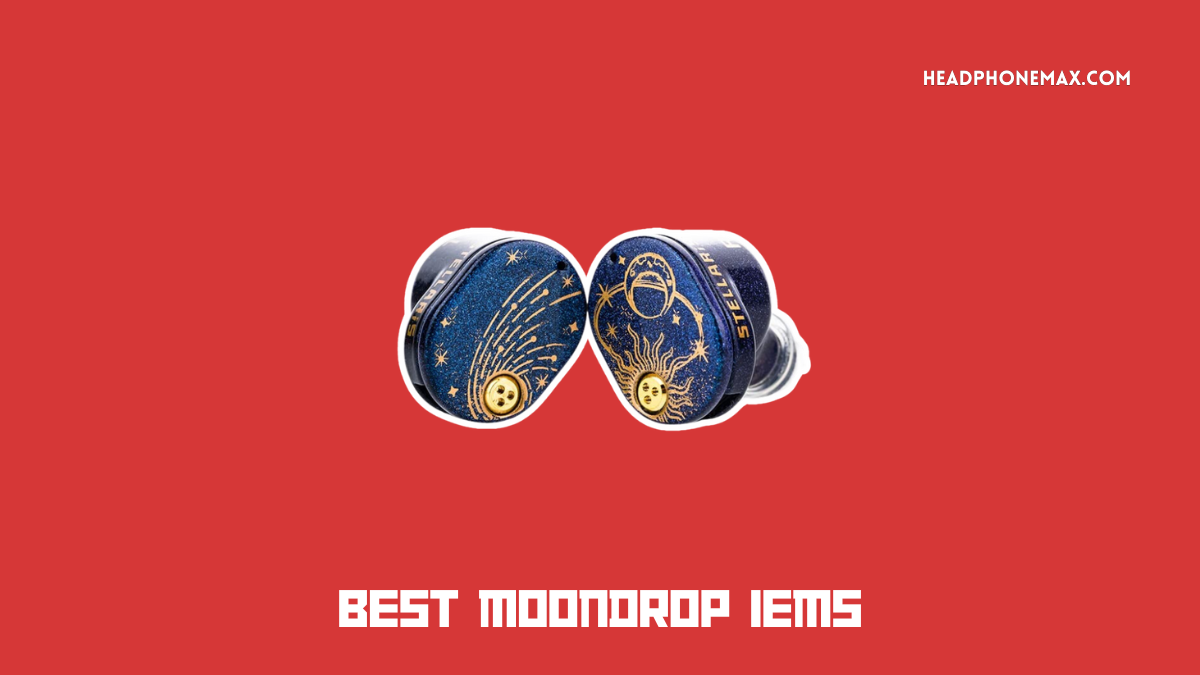You hear the name Moondrop, and possibly IEMs Like Aria and Blessing 2 Dusk come to your mind. But this IEM manufacturer is much more than that. That’s why, I have picked some of the best MoonDrop IEMs of all time.
Some Audiophiles consider Moondrop a low-end IEM brand that targets the budget users who are looking to extract maximum performance without paying a premium. It’s somewhat true but then you see the likes of MoonDrop Variations and S8 which are the premium range in the MoonDrop Line up.
Well, what are their targeted audience and how they perform among the giants, let’s see this
Best MoonDrop IEMs to Pick for Your Next Track
I am dividing the MoonDrop IEMs into these categories;
- Budget Series: Covers IEMs like legendary Aria under the range of $150, Excellent sound quality, good performance and well build
- Midrange Series: Never forget to see the MoonDrop Blessing 2, good value for money, under $250-$300, and have all-rounder intent.
- Premium Series: IEMs like S8 makes it to this category, Premium build quality and performance, Comes under the pricing tag of 750-800 bucks.
Mid Range MoonDrop IEMs:
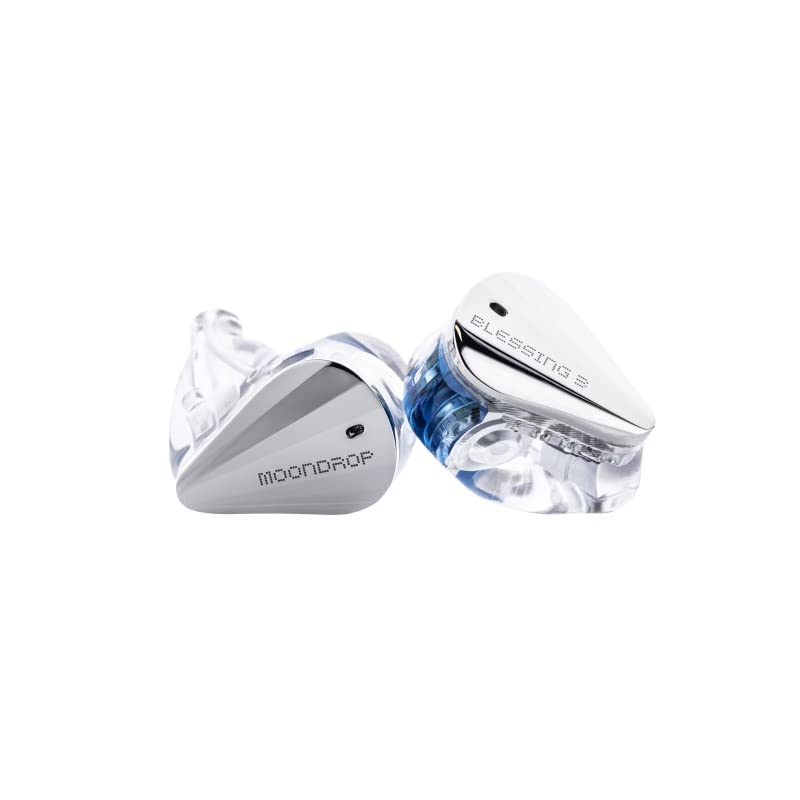
MoonDrop Blessing3
Best Points:
1. Advanced acoustic engineers.
2. Upper midrange and spatial soundstage lovers.
3. Crystal-clear high frequencies seekers.
4. Audiophiles seeking nuanced musical retrieva.
Best For:
1. Advanced acoustic engineers.
2. Upper midrange and spatial soundstage lovers.
3. Crystal-clear high frequencies seekers.
4. Audiophiles seeking nuanced musical retrieva.
Cons: Light BassFaceplat looks slightly ordinary.
Closest Alternatives: Linsoul Yanyin Ca-Non.
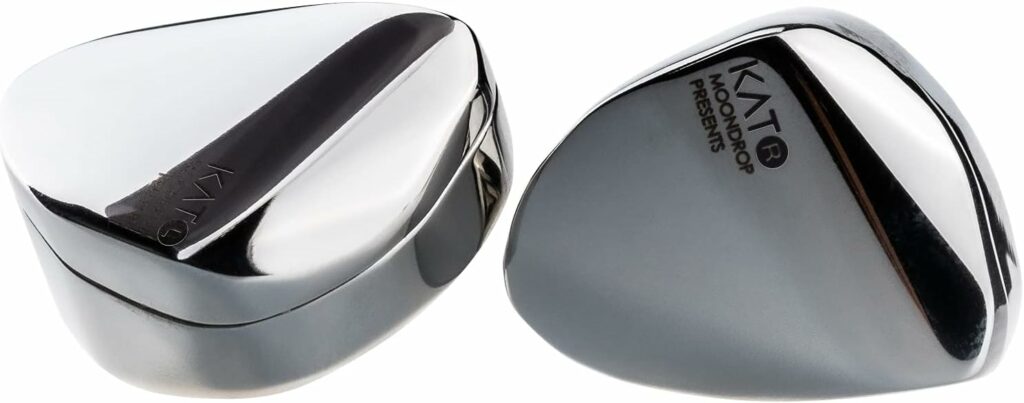
MoonDrop Kato
Best Points:
1. Technical Prowess.
2. Superb design and premium build.
3. Absolute dynamic sound signature.
Best For:
1. Aria and KXXS users looking for an upgrade in a midrange budget for detailed sound landscapes.
2. Comfort and snug fit seekers.
3. Stereo imaging fans looking for neutral and accurate sound.
Cons: Attract Fingerprint smudges, Same nozzle like KXXS.
Closest Alternatives: IKKO OH10.
Best Budget MoonDrop IEMs:
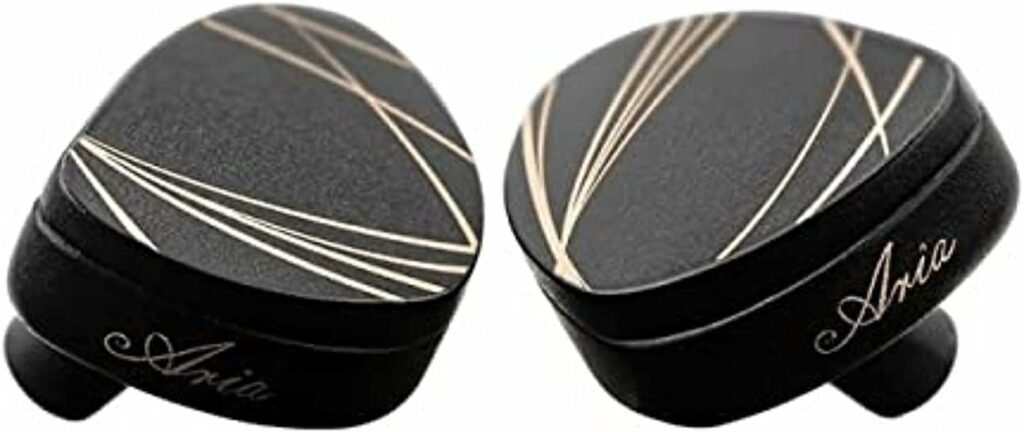
Moondrop Aria
Best Points:
1. Robust and Quality Build.
2. Most balanced sound profile.
3. Sheer Accuracy and pin-point imaging.
Best For:
1. On-stage musicians.
2. Budget audiophiles.
3. Commuters,
4. Extended listeners.
Cons: Treble sometimes feel sharp, mids rarely imbalance.
Closest Alternatives: Linsoul TIN HiFi T4.

Moondrop STELLARIS
Best Points:
1. Unique sound with planar driver.
2. Decent sound performance.
3. Performance, good build quality.
Best For:
1. Live recording enthusiasts.
2. Detail-focused listeners.
3. Budget-conscious audiophiles,
4. Unique design admirers.
Cons: Slightly uneven tonality, low bass profile.
Closest Alternatives: Kinera Idun 2.0.
Best Mid Range MoonDrop IEMs
I am shedding some analytical light on this category first as this is the most practical series for audiophiles, musicians, travelers, etc. So placing here IEMs which are most practical within a moderate budget and delivers absolute value to money.
MoonDrop Blessing3
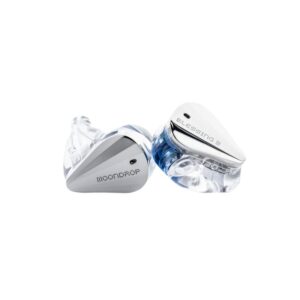
Why Do We Choose This: Surely, Blessing2 should have been placed here. But, I believe the Blessing3 is more value-to-money considering sleeker design, upgraded driver configuration, and refined tuning. An additional 1DD driver renders the sound performance cleaner, layered, and effortless. Confused between Blessing2 and Blessing2 Dusk? This advanced variant provides improved weight and texture in the bass, a more natural and lively midrange, and layered, textured, and detailed treble within the same pricing.
Who’s it for: Advanced acoustic engineers, Upper midrange and spatial soundstage lovers, crystal-clear high frequencies seekers, audiophiles seeking nuanced musical retrieval.
Who Should Avoid it: Looking for warm, lush sound profiles and thick textures, Traditionalists
Best Selling Points of MoonDrop Blessing3:
- Fantastic Soundstage Performance: It offers a meticulously curated spatial representation, pinpointing each instrument with finesse, providing a vast and well-defined sound performance.
- Dual Dynamic Driver Prowess: An additional DD produces bass that’s not only fast but also agile, setting a new bar for in-ear monitor innovations.
- Elevated Upper Midrange Precision: Energetic and vibrant tuning! Furnishes a genuine musical experience that makes instruments and vocals come alive with realism.
Many people show high appreciation for Blessing2. However, I believe Blessing3 is much more practical and delivers good value-to-money in certain areas, turning into the best Moondrop IEM. If I technically summarize this in one line, the imaging precision is splendid. With its sublime instruments accuracy, it has the most spatial soundstage, countering the congested soundstage issue with its expansive and holographic experience
That being said, it’s an innovative dual dynamic driver IEM, solving the problem of sluggish bass. So technically, it’s swift and provides a nimble response that can keep pace with intricate tracks.
And those craving depth without overwhelming thump will appreciate the lean bass profile, especially in the mid-bass section, ensuring an airy, spacious soundstage. It gives a clear choice between Blessing2 and Blessing2 Dusk.
Users who are particularly drawn to female voices, the neutral midrange presents vocals with unmatched clarity. So, the common issue of muddled vocal presentations? It’s gone. I believe this Moondrop IEM has the most unique upper midrange tuning. It eliminates the flatness, introducing a lively, vibrant bite that resonates with realism.
Treble enthusiasts often grapple with overly sharp or muted highs. The Blessing 3 combats this with transparent, extended trebles, lending airiness without sibilance, making cymbals and hi-hats crisp and clear, furnishing a well-rounded sound profile.
Pros
- Aesthetically more chic and ergonomically more fit
- Decent comfort and excellent packaging
- Innovative driver configuration for more clarity
- Expansive holographic soundstage.
- Swift, nimble bass response from its predecessor
- Vibrant upper midrange tuning.
- Transparent extended trebles.
Cons
- Leaner bass presence
- Faceplate looks slightly ordinary compared to the transparent shell.
Best Alternatives to MoonDrop Blessing3:
- Superior bass extension
- Enhanced build durability
- Warmer tonality
The Yanyin Ca-Non has a definite deeper bass extension. It caters to those seeking a punchier low-end, while its relatively solid construction promises undisputed durability. As a huge gap in both IEMs performance, the Ca-Non offers a warmer tonality in contrast to Blessing 3’s neutral to bright presentation. So it covers the weaknesses of Blessing3 for listeners who prefer a more laid-back sound profile.
MoonDrop Kato
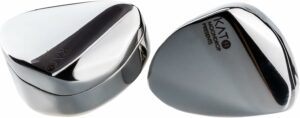
Why Do We Choose This: Certainly it isn’t just another Moondrop IEM; it’s a solution for those seeking impeccable build and a snug fit with well-rounded sound performance. After the legendary KXXS, the KATO ticks all boxes to impress with its unmatched stereo imaging. Plus, its layered and deep sound profile for its price bracket is surely a rare thing. If deciphering intricate soundscapes matters to you, KATO’s precision gives a reason to smile with its worthy upgrades for superb audio immersion.
Who’s It For: Aria and KXXS users looking for an upgrade in a midrange budget for detailed sound landscapes, comfort and snug fit seekers, stereo imaging fans looking for neutral and accurate sound
Who Should Avoid it: Bass lovers looking for overwhelming lows on a very tight budget,
Listeners preferring heavily colored sound
Best Selling Points of MoonDrop Kato:
- Superior Build & Design: The First Impression will tell you how meticulously it has been built. Hand-polished, stainless steel chassis available in two finishes. Compact, angular design ensures a comfortable fit even during extended use.
- Dynamic Sound Signature: Impressively airy with precise instrument separation! Superbly coherent and non-fatiguing listening experience, makes it a versatile choice across genres.
- Technical Prowess: Boasting excellent speed, stereo imaging and a deep, wide soundstage through a single dynamic driver is its most strongest technical capability that outshine many in its price range.
The Moondrop Kato offers listeners a solution to design flaws and sound issues, setting a new benchmark in IEMs. I honestly like its design and snug fit. For example the hand-polished stainless steel chassis, available in both matte and glossy finishes never let aesthetic lovers down.
And it’s not just a feast for the eyes, the decisive practicality lies in its angular and compact design with 5 pairs of tips for commuters and travelers who are looking for an “on-the-go†like IEM.
Moreover, for those who’ve grappled with fit and comfort, Kato offers a solution, even during extended listening sessions.
Regarding Kato’s sound, this is where it gives reasons for users to upgrade from Moondrop KXXS or Aria. It brings forth an expansive, airy soundstage, addressing the challenge of blending instrument sounds cohesively.
The bass is dynamic, offering depth without muddying tracks, a noticeable improvement over KXXS. Mids shine, delivering crystal-clear vocals and instruments, ensuring no detail is missed. The trebles are fine-tuned to provide detail without being piercing.
Precisely Kato exhibits a worthy upgrade in superior stereo imaging and sound clarity, making it a must-have for listeners who crave precision. This balance, with its slight warmth, solves the problem of distorted or unbalanced sounds, giving listeners an immersive experience.
Pros
- Hand-polished stainless steel.
- Compact, comfortable angular design.
- Expansive, airy soundstage.
- Dynamic bass reproduction.
- Crystal-clear midrange vocals.
Cons
- Attracts fingerprint smudges.
- No significant nozzle difference.
Best Alternative to MoonDrop Kato:
- Superior Build.
- Bass Depth.
- Comfort Factor.
Kato definitely impresses with its airy presentation and precise soundstage. WIth picking IKKO OH10 is due to it fills the gap with its outstanding build and deeper bass resonance. Regarding ergonomic fit, I feel both IEMs have a snug fit but IKKO feels more comfortable , especially during extended listening sessions. OH10 is a worthy contender for those seeking durability and a slightly warmer sound signature
Best-Budget MoonDrop IEMs:
Placing here the good performers under the budget of 150$. MoonDrop has good range here and you can see the likes of Aria.
Moondrop Aria
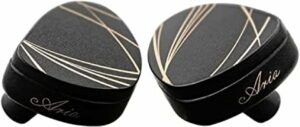
Why Do We Choose This: It’s definitely the Best Moondrop IEM in the budget category for newcomers seeking genuine value-for-money and a taste of audiophile-grade sound. And this is due to Aria avoiding over-complication, focusing on delivering clear, natural sound that music lovers crave. That said, it positions itself comfortably between the Starfield and Starfield 2; masterfully balances cost and performance with a spacious soundstage that’s essential for on-stage clarity., Aria is a commendable choice.
Who’s it for: On-stage musicians, budget audiophiles, commuters, extended listeners
Who Should Avoid It: Bass enthusiasts, Tech feature seekers
Best Selling Points of MoonDrop Aria:
- Robust Build & Comfort: Apart from most practical sound performance, durability is like a hot cake for Aria to sell to Audiophiles. It combines a tank-like, durable metal design with comfort, ensuring a snug fit and hours of fatigue-free listening.
- Clear & Balanced Sound Profile: Typical Moondrop Clarity and Accuracy it carries! Its bass provides depth without overpowering, mids are airy and crisp, and treble offers clarity, catering to a variety of music genres.
- Distinct Instrument Separation & Imaging: It’s a power hub in instrument distinction and layering, delivering a soundstage where vocals and instruments retain their individuality without feeling compressed.
It’s really a gem in the realm of IEMs that I feel I can’t even describe in words about its legendary value to money. But In essence, Aria is an undisputed champ for an audience seeking a durable, comfortable, and sonically impressive IEM without breaking the bank.
It boasts a design that mirrors both robustness and elegance with a 3-piece CNC carved metal shell that feels as premium as a finely crafted piece of art.
But it’s not just a pretty face; the famous quasi-custom design ensures a solid, snug fit. So, it practically and comfortably holds the strongest place for commuters or students enjoying a cafe ambiance or travelers enjoying the metro.
Sound-wise, it’s a clear step up from its budget siblings like the Starfield and Starfield 2. The bass dives deep without overwhelming, targeting those who crave beats without muddiness. Mids, while slightly uneven, present female vocals with an airy, crisp texture – a delight for ballad lovers. The treble sparkles with clarity, although a tad sharp on certain tracks.
But, but, but; ladies and gentlemen, a real win for the Aria is its soundstage. The strongest zone here is the distinct instrument separation and impeccable imaging. It transfor the listening experience into layered, coherent but never makes it compressed.
Like I said above, this is where Moondrop IEMs like Aria truly shine, offering value for money that’s hard to match. And this is where it becomes Immortal.
Pros
- Robust, elegant design.
- Clear, distinct instrument separation.
- Deep, balanced bass response.
- Crisp, airy female vocals.
Cons
- Slightly uneven mids.
- Treble occasionally sharp.
Best Alternatives to Moondrop Aria:
- Extended Treble Response.
- More Neutral Sound Signature.
- Solid Build Quality.
On technical specs, Tin Audio T4’s larger driver size provides a broader dynamic range, potentially edging out Aria’s performance in clarity and detail. Similarly, T4 has better extended treble response, presenting clearer high-frequency details. I feel its sound signature leans more towards neutrality, offering a balanced audio experience across genres. Moreover, T4’s robust build ensures longevity, potentially outlasting competitors. Where Aria emphasizes certain frequencies for character, T4 fills the gap for those seeking a flatter, more neutral listening experience.
Moondrop STELLARIS
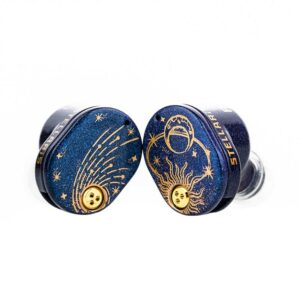
Why Do We Choose This: In a sea of generic IEMs, Stellaris is performance punch for budget users seeking quality and a distinct auditory experience. It’s a purposeful choice for discerning listeners.With it’s unique planar design with a spacious soundstage, offering detailed and transparent audio, it found it ideal for aficionados of live recordings. And under this budget, the aluminum craftsmanship ensures true value-for-money and durability.
Who’s it For: Live recording enthusiasts, Detail-focused listeners, budget-conscious audiophiles, unique design admirers.
Who Should Avoid It: Full-bodied sound fans, traditional tuning lovers
Best Selling Points of MoonDrop Stellaris:
- Unique Sound: Ah Planar Driver! It offers a one-of-a-kind sound experience, making it stand out in a crowded market.
- High-Quality Build: Its all-aluminum design and high-quality cable give it a premium feel, often found only in much more expensive models.
- Decent Technical Performance: It’s a performance punch in a budget. Excels in detail and soundstage, providing a high-quality listening experience for the budget-conscious audiophile
It’s definitely a budget and one of the best Moondrop IEMs and why I choose it over Starfield? It uses planar drivers, so it’s not your typical “same old sound” you might find in regular earphones. It’s unique, fresh, lively and at a different level.
If you’re thinking of a cheap, breakable earphones due to its pricing, Stellaris definitely tricks you there. Aesthetically premium and superbly durable with all-aluminum body, making it practical for everyday use. Its comfy design also means you can wear them for a long time without your ears hurting.
And when you ask what a Planar driver brings to the table? It’s a wide soundstage. Renders a spatial experience of “being there” in a live concert, resolving the flat, lifeless sound. For folks who love details in their music, this is a win.
Lows a bit flat but clean. This might be good for those who like listening to vocals or acoustic music, where heavy bass isn’t needed. The mids are vibrant and clear, great for people who enjoy hearing every instrument in a song. The treble is energetic, making high notes in music shine.
So, if you’re a budget-conscious audiophile looking for a unique, durable, and technically impressive set of earphones, the Moondrop Stellaris could be your answer.
Pros
- Unique Planar Sound.
- Premium Aluminum Build.
- Wide Soundstage.
- Detailed Mids.
- Energetic Treble.
- Budget-Friendly.
Cons
- Flat Bass.
- Slightly Unbalanced Tonality.
Best Alternatives to MoonDrop Sterllaris:
- More Balanced Sound
- Stronger Bass
- Dynamic Drivers
Its balanced sound provides a well-rounded listening experience, making up for the Stellaris’ unbalanced tonality. The Idun 2.0 also offers richer bass, addressing the flat bass response of the Stellaris. The hybrid drivers in the Idun 2.0 yield a more natural sound, solving the tinny instrument problem found in the Stellaris.
